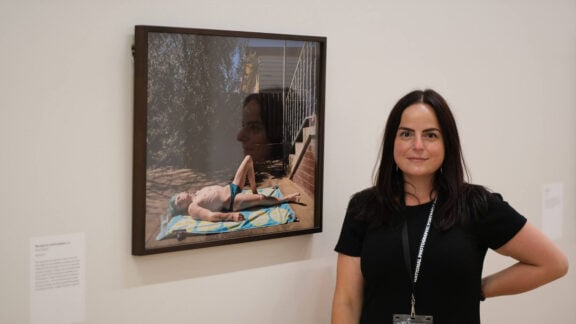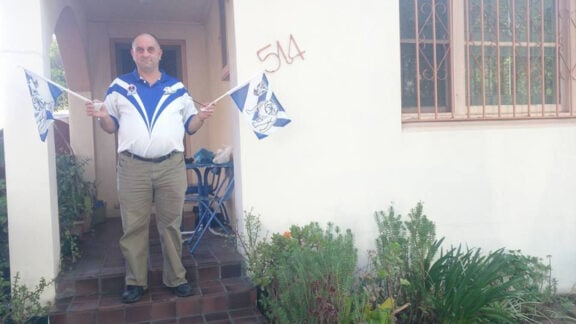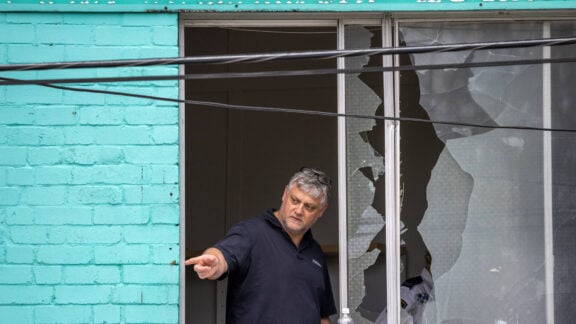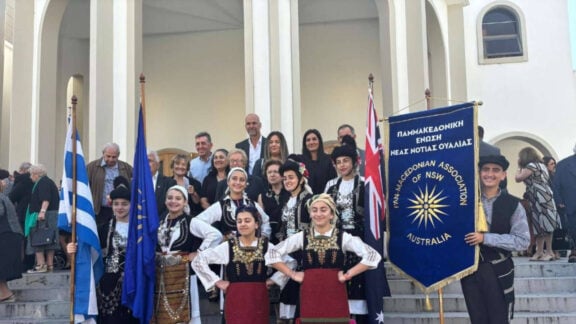After seven years of campaigning, the efforts to immortalise the world’s first milk bar opened by Joachim Tavlaridis (also known as Mick Adams) finally bore fruit with the official unveiling of a plaque recognising its esteemed place in Sydney and Australian history.
Tavlaridis’ Black & White 4D Milk Bar was formally celebrated in a private ceremony on Wednesday July 31 at 20 Martin Place with his descendants (grandchildren and great-grandchildren) as well as notable officials in attendance to mark the occasion.
The plaque is part of the City of Sydney’s Green Plaque Program, with the unveiling ceremony being a joint initiative by Pembroke (ANZ tower owners/managers in Sydney) and the City of Sydney Council.
The event, held near the milk bar’s original location of 24 Martin Place, saw a collection of photographs on display that were taken during the shop’s operations, with celebratory milkshakes also available.
The Lord Mayor of Sydney, Clover Moore, historian Dr Leonard Janiszewski and Pembroke Regional Director for Australia, Joe Fitzpatrick, spoke on the significance of Tavlaridis’ milk bar.
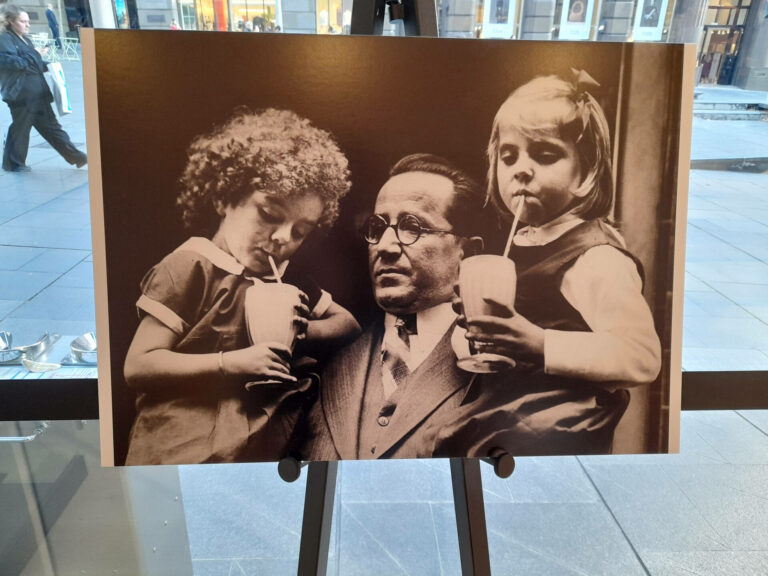
Health Home outside his milk bar in 1934. Original Photo courtesy L. Keldoulis, from the ‘In Their Own Image: Greek-Australians’ National Project Archive, Sydney
Sydney’s Lord Mayor expressed their honour in being able to celebrate Tavlaridis’ legacy with his descendants, describing it as a quintessential successful migrant story.
“He opened the milk bar post-depression in between the two World Wars. Things were pretty grim. Here in Martin Place, this would have been full of traffic, not people, and his milk bar was so popular that he had milk delivered four times a day,” the Moore told Neos Kosmos.
“It is a remarkable story and it is a happy occasion as we have now been able to put the plaque up.”
Janet France, Tavlaridis’ granddaughter, explained that her mother Lilian often shared stories of the milk bar (which Tavlaridis ran from 1932 to 1957) and that was what served as motivation for them to push for the plaque.
“The stories we heard of his milk bar are part of why we have pushed so hard for this, because there are very few statues and plaques to immigrants,” she told Neos Kosmos.
“There are a lot for white people but not a lot for the migrant communities, in this case specifically the Greek Diaspora and what they did for the Australian community at large.”

Janet elaborated how Tavlaridis got the idea from the Soda Fountains in America, thinking to do something similar but with milkshakes.
“It was like a pub but with milkshakes, and so the turnover was really high.”
She also shed light on other aspects of Tavlaridis’ life, with the Greek migrant having opened up financial services after finishing working in the milk bar wherein he would lend money to Greeks and Italians as well as doing some interpreting in courts.
“He was always trying to help others where he could,” Janet said.
She stated that her mother Lilian and aunt Helen (Tavlaridis’ daughters whom both passed away during the seven years of campaigning for the plaque) were extremely proud of their father and what he accomplished.
Dr Janiszewski and Effy Alexakis, two key figures in the campaign for the plaque, expressed their joy the plaque was finally unveiled but were also a little disappointed that Lilian and Helen were unable to see it, especially given the plaque itself was cast seven years ago when they were both still alive.

“It feels a little bittersweet because they are missing but it is a relief to see the grandchildren and great-grandchildren come today,” Alexakis told Neos Kosmos.
“For Greek Australian history, this is also a really important marker from 1932 and most of us should be proud of that.”
Dr Janiszewski elaborated on the impact Tavlaridis had in Australian popular culture, and that it is highly symbolic his legacy is acknowledged in mainstream Australian history given that most people of non-English speaking backgrounds struggle to be recognised historically.
“Mick created an icon that became part of our popular culture. It was part of our social being from the 1930s right through until the 1960s, collectively as Australians,” Dr Janiszewski told Neos Kosmos.
“Many of the older Australians will remember the popularity of the milk bar and the knock-on effects in terms of how it connected with cinemas, which was part of this idea of fantasy and modernisation that was taking place. It was taking place through the Greeks.”

Pembroke’s Regional Director for Australia added their immense pleasure at playing a role in celebrating Tavlaridis and the milk bar he opened 92 years ago on their land.
“Being able to recognise such a unique part of not only Sydney history but also of global impact is a really great experience for us and we are happy to be a part of it,” Fitzpatrick told Neos Kosmos.
“To be able to share this with his descendants takes it from being just an interesting snippet in history and turns it into something that is real,” Fitzpatrick said.
Among the aforementioned attendees was also the Trade Commissioner of Greece in Australia, Chrysa Prokopaki, representing the Consulate General of Greece in Sydney.
The product of seven years of campaigning by Dr Janiszweski and Effy Alexakis, together with Tavlaridis’ descendants and representatives of Sydney’s Greek community can now be seen by all who pass by Martin Place, the location of the Green Plaque honouring Tavlaridis’ legacy.



